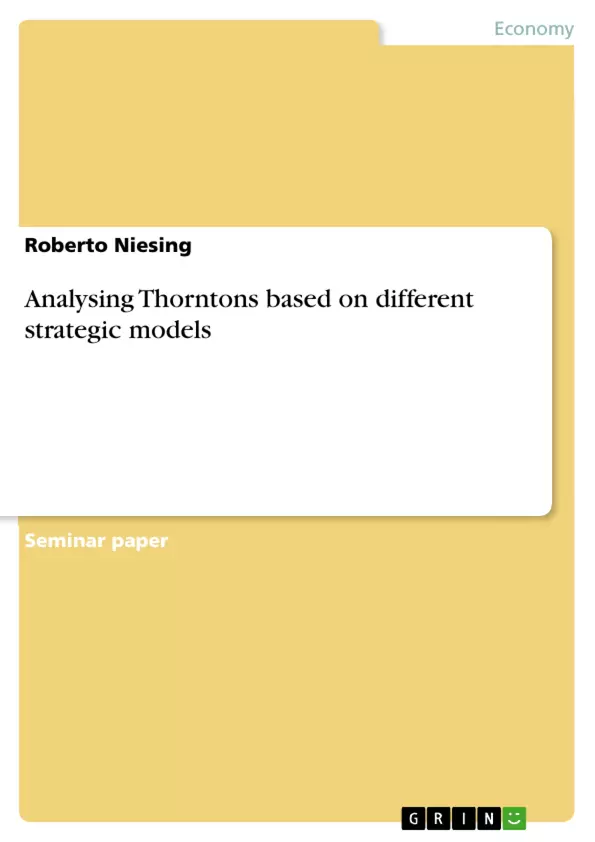The assignment analyses the position of Thorntons. This company is a very famous chocolate manufacturer in the UK. But struggled to meet customer demand in recent times.
The following models were used:
- Strategic orientation of companies (Porter) ;
- Bowman's competitive strategy options (Bowman);
- PEST / STEP analysis;
- 'Five Forces' model;
- Resource Audit;
- Value Chain analysis
Inhaltsverzeichnis (Table of Contents)
- Introduction
- What is the organisation's strategic position?
- What are the key external drivers of change affecting the organisation?
- How does the organisation add value?
- How sustainable is the strategic position?
Zielsetzung und Themenschwerpunkte (Objectives and Key Themes)
This report examines the strategic position of Thorntons, a premium chocolate provider in the UK, within the competitive landscape of the chocolate market. It analyzes the company's strategic position, identifies key external drivers of change, explores its value-adding mechanisms, and assesses the sustainability of its current strategy.
- Strategic Positioning and Competitive Advantage
- External Drivers of Change and Market Dynamics
- Value-Adding Mechanisms and Differentiation Strategies
- Sustainability of Strategic Position and Future Prospects
Zusammenfassung der Kapitel (Chapter Summaries)
- Introduction: This chapter provides an overview of the report's scope and structure, introducing the focus on Thorntons and the key areas of analysis.
- What is the organisation's strategic position?: This chapter examines Thorntons' generic strategy and competitive positioning within the chocolate market. It analyzes the company's target market, competitive advantages, and potential threats.
Schlüsselwörter (Keywords)
The report focuses on the strategic position of Thorntons, a premium chocolate provider in the UK, analyzing its competitive advantage, key external drivers of change, value-adding mechanisms, and the sustainability of its strategic position within the dynamic chocolate market.
- Citation du texte
- Roberto Niesing (Auteur), 2008, Analysing Thorntons based on different strategic models, Munich, GRIN Verlag, https://www.grin.com/document/92858



